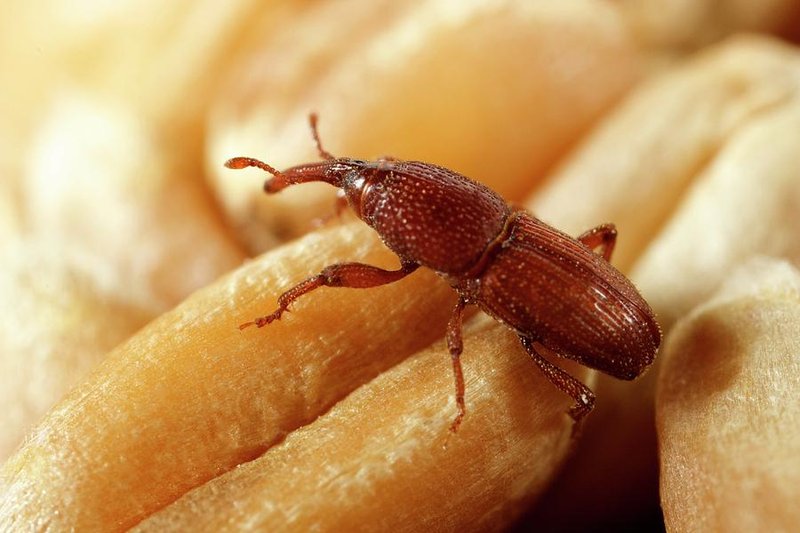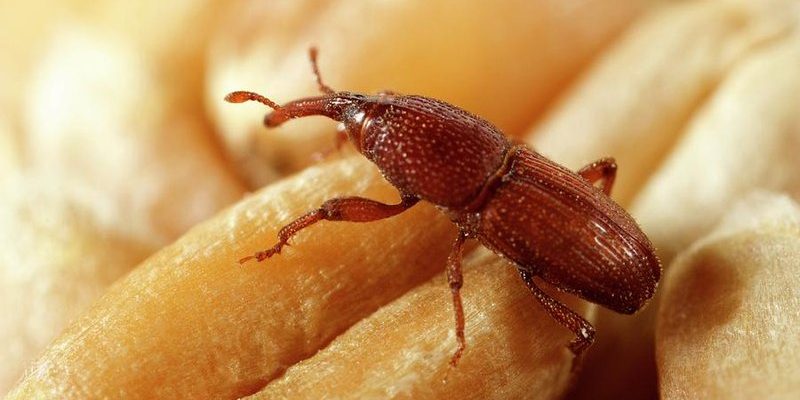
Have you ever opened a bag of flour or rice, only to find tiny bugs scurrying around? These little troublemakers are often grain weevils, a common pest that can turn your pantry into their personal buffet. Finding them can be alarming, especially when you consider how quickly they can multiply and wreak havoc on your food supply. But what exactly are these insects, and how can you keep them out of your home? Let’s dive into the fascinating world of grain weevils, understanding their habits, how they get into our food, and the best ways to prevent an infestation.
Grain weevils are small beetles that belong to a family of insects known as Curculionidae. They are often mistaken for other pests, but their distinctive features and behaviors help set them apart. Understanding their lifecycle and habits can equip you with the knowledge needed to tackle any potential infestation. So, let’s explore everything you need to know about these tiny invaders!
What Are Grain Weevils?
Grain weevils are small, brown or black beetles that typically measure about 1/8 to 1/4 inch in length. The most common species are the rice weevil and the maize weevil. The rice weevil can be recognized by the four distinctive yellowish spots on its back, while the maize weevil lacks these markings, making it a bit harder to identify at first glance.
These bugs are notorious for their ability to infest stored grains. Rice, corn, wheat, and other cereals are their preferred targets. They enter food packaging, lay their eggs, and the larvae hatch, feeding on the grain, which causes damage and contamination. It’s as if they throw a party in your pantry without an invitation!
Interestingly, grain weevils have a unique adaptation: they can chew through packaging materials. This means that even sealed bags may not always keep them out. So, if you notice tiny holes or powdery residue in your food, it’s time to take action.
Lifecycle of a Grain Weevil
The lifecycle of a grain weevil consists of four stages: egg, larva, pupa, and adult. After a female weevil lays her eggs inside a grain kernel, they can hatch within just a few days. The larvae then burrow into the grain, where they will grow and develop. This hidden lifestyle makes it difficult to detect them early on.
After several weeks of feeding and growing, the larvae pupate and ultimately emerge as adult weevils. The cycle can repeat itself quickly, with a single female able to produce up to 300 eggs in her lifetime. That’s a lot of potential new weevils to deal with!
It’s fascinating to think about how these tiny creatures have adapted to survive and thrive in human food stores. However, this adaptability means that acting quickly is essential if you want to keep them from turning your pantry into their playground.
Identifying Grain Weevil Infestations
Recognizing a grain weevil infestation can sometimes be tricky. If you see actual bugs, that’s a telltale sign. But even if you don’t spot them, look for signs of damage. Small holes in food packaging or the presence of fine powdery frass (insect droppings) can indicate a problem.
Another clue may come from the grains themselves. If you notice that some grains appear to have been hollowed out or have small exit holes, it’s likely that weevils have taken up residence inside. Inspect your pantry regularly, especially if you’ve recently bought new grains.
Also, keep an eye out for any unusual odors coming from your food. Sometimes an infestation can lead to a rancid or musty smell that’s definitely not appetizing. If you notice any of these signs, it’s best to act swiftly to avoid a larger problem.
How Do Grain Weevils Enter Your Home?
You might be wondering how these pesky little bugs manage to find their way into your home in the first place. Grain weevils usually enter through contaminated products. When you purchase grains, they may already be infested with eggs or larvae. This means that the beetles can hatch after you’ve brought them home.
Additionally, grain weevils can also be introduced through bulk foods, animal feed, or even secondhand furniture that contains infested wood. They’re not picky about how they get in, but once they do, they can quickly establish a foothold.
Store grains in airtight containers to minimize the chances of an infestation. This not only helps keep weevils out but also keeps your food fresher longer. It’s a small change that can make a big difference in your pantry’s health!
Preventing Grain Weevil Infestations
The best way to deal with grain weevils is to prevent them from moving in. Here are some effective strategies:
- Inspect Food Products: Always check for holes or unusual signs before you buy grains.
- Store Properly: Use airtight containers for all dry foods, keeping them sealed tightly.
- Regular Cleaning: Keep your pantry clean and free from crumbs and spills that attract pests.
- Rotate Stock: Use older products first to ensure they don’t sit around long enough for weevils to breed.
Taking these proactive steps can save you from a potential headache and keep your pantry weevil-free. Remember, an ounce of prevention is worth a pound of cure!
How to Get Rid of Grain Weevils
If you find that you already have a grain weevil problem, don’t panic. Here’s how to tackle it:
- Identify Infested Items: First, throw away any contaminated grains. You don’t want to risk other items getting infected.
- Clean Thoroughly: Vacuum your pantry to get rid of any stray bugs or eggs. Don’t forget to clean the corners and shelves.
- Use Traps: Sticky traps can help catch adult weevils and give you an idea of how severe the infestation is.
- Consider Natural Remedies: Some people swear by using diatomaceous earth, a non-toxic powder that can help kill insects.
By following these steps, you can restore your pantry to good health. Just remember, vigilance is key!
Grain weevils may be tiny, but they can cause a lot of trouble in your pantry. Understanding what they are, how they live, and how to prevent and eliminate them is crucial in keeping your food safe. From inspecting your groceries to keeping your grains stored securely, staying one step ahead can help you enjoy a pest-free kitchen.
If you ever do find yourself facing these little invaders, don’t hesitate to use the tips we’ve shared. After all, a clean and bright pantry is a happy pantry!
FAQ
What do grain weevils look like?
Grain weevils are small beetles, often brown or black, measuring about 1/8 to 1/4 inch in length. The rice weevil typically has four yellowish spots on its back, while the maize weevil does not, making it sometimes harder to identify. They have elongated bodies and a characteristic long snout, which sets them apart from other pests.
Can grain weevils harm humans?
No, grain weevils do not pose a direct threat to humans. They don’t bite or sting, and they can’t transmit diseases. However, they can contaminate food, which can be unappetizing and wasteful. If you’ve discovered them in your pantry, it’s best to dispose of the infested items to keep your food supply safe.
How can I tell if I have a grain weevil infestation?
Look for signs like small holes in food packaging, fine powdery residue, or damaged grains. If you see tiny bugs in your pantry, that’s a strong indication of an infestation. Regular inspections are key to catching these signs early and preventing a larger problem.
How long do grain weevils live?
Adult grain weevils can live for several months to up to a year, depending on environmental conditions. They can reproduce quickly, which means that if you find them in your pantry, you need to act fast to prevent their numbers from growing.
Can I eat food that had grain weevils?
While the presence of grain weevils doesn’t necessarily mean the food is harmful, it’s generally best to discard infested items to avoid any health risks. Consuming food that has been contaminated can be unappetizing and may lead to digestive discomfort. It’s better to be safe than sorry!
How do I prevent grain weevils from entering my home?
Preventing grain weevils starts with inspecting food products before you purchase them. Look for any damage or signs of infestation. Once at home, store grains in airtight containers, clean your pantry regularly, and use older food first to avoid infestations.
What natural methods can I use to get rid of grain weevils?
Some effective natural methods include using diatomaceous earth, a non-toxic powder that kills insects upon contact. You can also vacuum your pantry to remove any bugs and eggs and use sticky traps to catch adult weevils. Keeping your pantry clean and organized is also essential.

